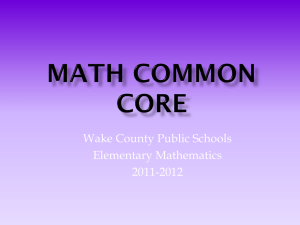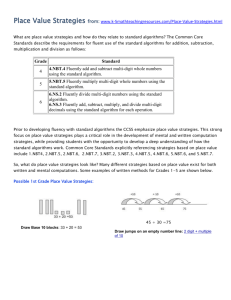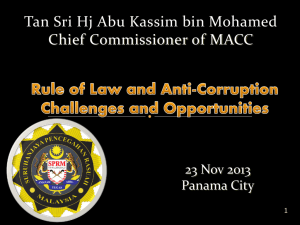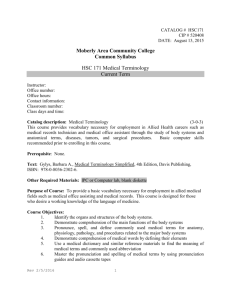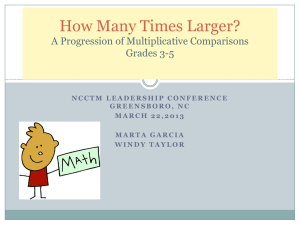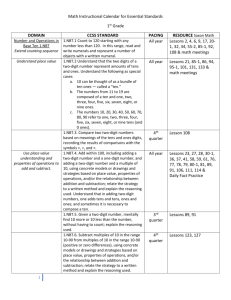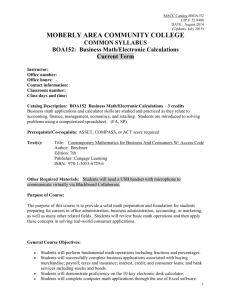Map 3 Number to 120 resources grade 1
advertisement
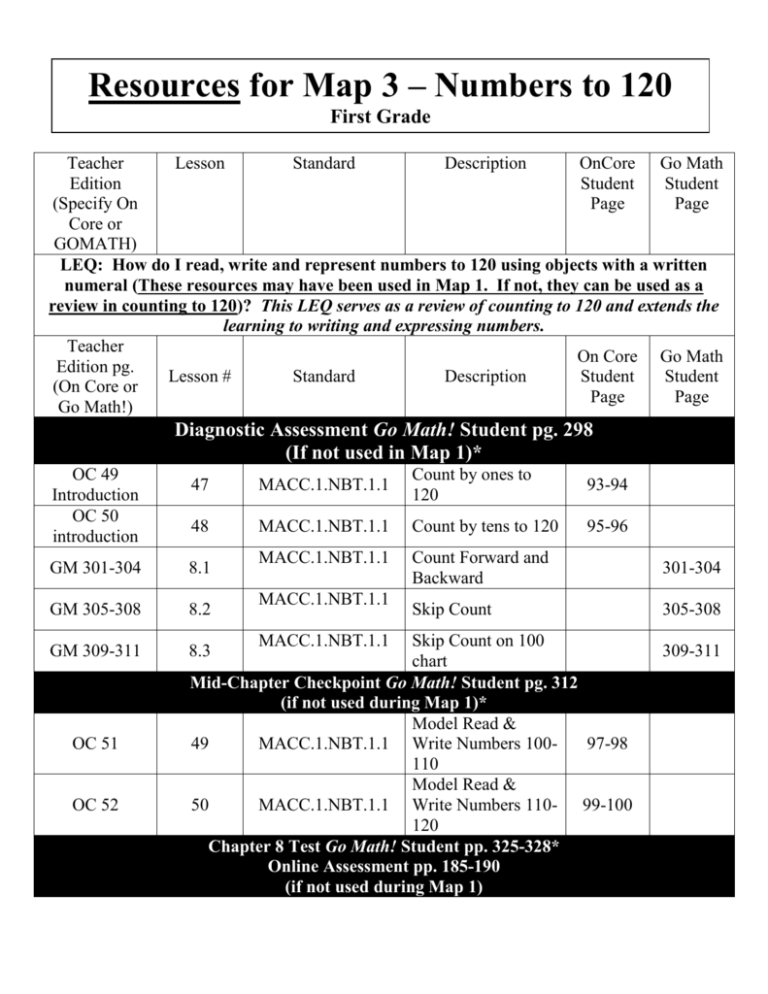
Resources for Map 3 – Numbers to 120 First Grade Teacher Lesson Standard Description OnCore Go Math Edition Student Student (Specify On Page Page Core or GOMATH) LEQ: How do I read, write and represent numbers to 120 using objects with a written numeral (These resources may have been used in Map 1. If not, they can be used as a review in counting to 120)? This LEQ serves as a review of counting to 120 and extends the learning to writing and expressing numbers. Teacher On Core Go Math Edition pg. Lesson # Standard Description Student Student (On Core or Page Page Go Math!) Diagnostic Assessment Go Math! Student pg. 298 (If not used in Map 1)* OC 49 Introduction OC 50 introduction 47 MACC.1.NBT.1.1 Count by ones to 120 93-94 48 MACC.1.NBT.1.1 Count by tens to 120 95-96 MACC.1.NBT.1.1 Count Forward and Backward 301-304 Skip Count 305-308 GM 301-304 8.1 GM 305-308 8.2 GM 309-311 8.3 OC 51 OC 52 MACC.1.NBT.1.1 MACC.1.NBT.1.1 Skip Count on 100 chart Mid-Chapter Checkpoint Go Math! Student pg. 312 (if not used during Map 1)* Model Read & 49 MACC.1.NBT.1.1 Write Numbers 10097-98 110 Model Read & 50 MACC.1.NBT.1.1 Write Numbers 110- 99-100 120 Chapter 8 Test Go Math! Student pp. 325-328* Online Assessment pp. 185-190 (if not used during Map 1) 309-311 Diagnostic Assessment Go Math! Student pg. 222 LEQ: How can I show place value of two-digit numbers? (two-digit number represents amounts of tens and ones) GM 237-240 MACC.1.NBT.2.2 or 6.4 Tens and Ones to 50 237-240 OC 52 GM 241-244 MACC.1.NBT.2.2 Tens and Ones to or 6.5 241-244 100 OC 53 LEQ: How can I identify one and two-digit numbers with values of tens and ones? GM 225-228 6.1 GM 245-248 6.6 GM 229-232 6.2 OC 57 55 GM 233-236 6.3 MACC.1.NBT.2.2a 10 can be thought of as a bundle of ten ones called a “ten” MACC.1.NBT.2.2b The numbers 11 to 19 are composed of a ten and a one, two, three, four, five, six, seven, eight, or nine ones MACC.1.NBT.2.2b MACC.1.NBT.2.2b MACC.1.NBT.2.2b Hands On: Tens 225-228 Problem Solving: Ways to Make Number 245-248 Make Ten and More 229-232 Make Tens and Ones 109-110 Write Ten and More 233-236 Mid-Chapter Checkpoint Go Math! Student pg. 236 OC 56 OC 58 54 56 MACC.1.NBT.2.2b MACC.1.NBT.2.2c The numbers, 10, 20, 30, etc. refer to one, two, three, etc. Understand Tens and Ones 107-108 111-112 of tens and zero ones Chapter 6 Test Go Math! – pp. 249-252 Chapter 6 Online Test – pp. 185-190 LEQ: How do I use place value to compare two digit numbers using symbols? (>,=, <) GM 257-260 GM 261-264 OC 113-114 GM 265-268 OC 115-116 GM 269-271 OC 61 OC 62 7.1 MACC.1.NBT.2.3 Compare Numbers to 20 7.2 or 57 MACC.1.NBT.2.3 Greater Than 113-114 261-264 7.3 or 58 MACC.1.NBT.2.3 Less Than 115-116 265-268 257-260 Use Symbols to 117-118 Compare Mid-Chapter Checkpoint Go Math! Student pg. 272 MACC.1.NBT.2.3 Problem Solving: 60 119-120 Compare Numbers 7.4 or 59 MACC.1.NBT.2.3 269-271 LEQ: How can I find 10 more or 10 less than a 2-digit number without having to count? OC 69 67 MACC.1.NBT.3.5 10 Less, 10 More 133-134 Chapter 7 Test Go Math! – pp. 293-296 Chapter 7 Online Test – pp. 173-178 (These assessments include items with number lines – see not below regarding teaching number lines in 1st grade**) *On Core Assessment Guide page number coordinates with the On Core Lesson number Note: Counting to 120 by tens and ones is denoted in MACC.1.NBT.1.1 of the CCSS. Go Math! materials for first grade limit counting to 100. Teachers should extend counting patterns in Go Math! lessons to 120.15) A separate 120 chart is available in the Supporting Documents folder for Map 1: Patterning & Counting. **Use of a number line does not appear in the Common Core State Standards until Grade 2. Teachers may, depending on the needs and abilities of their students, provide instruction on number lines.
